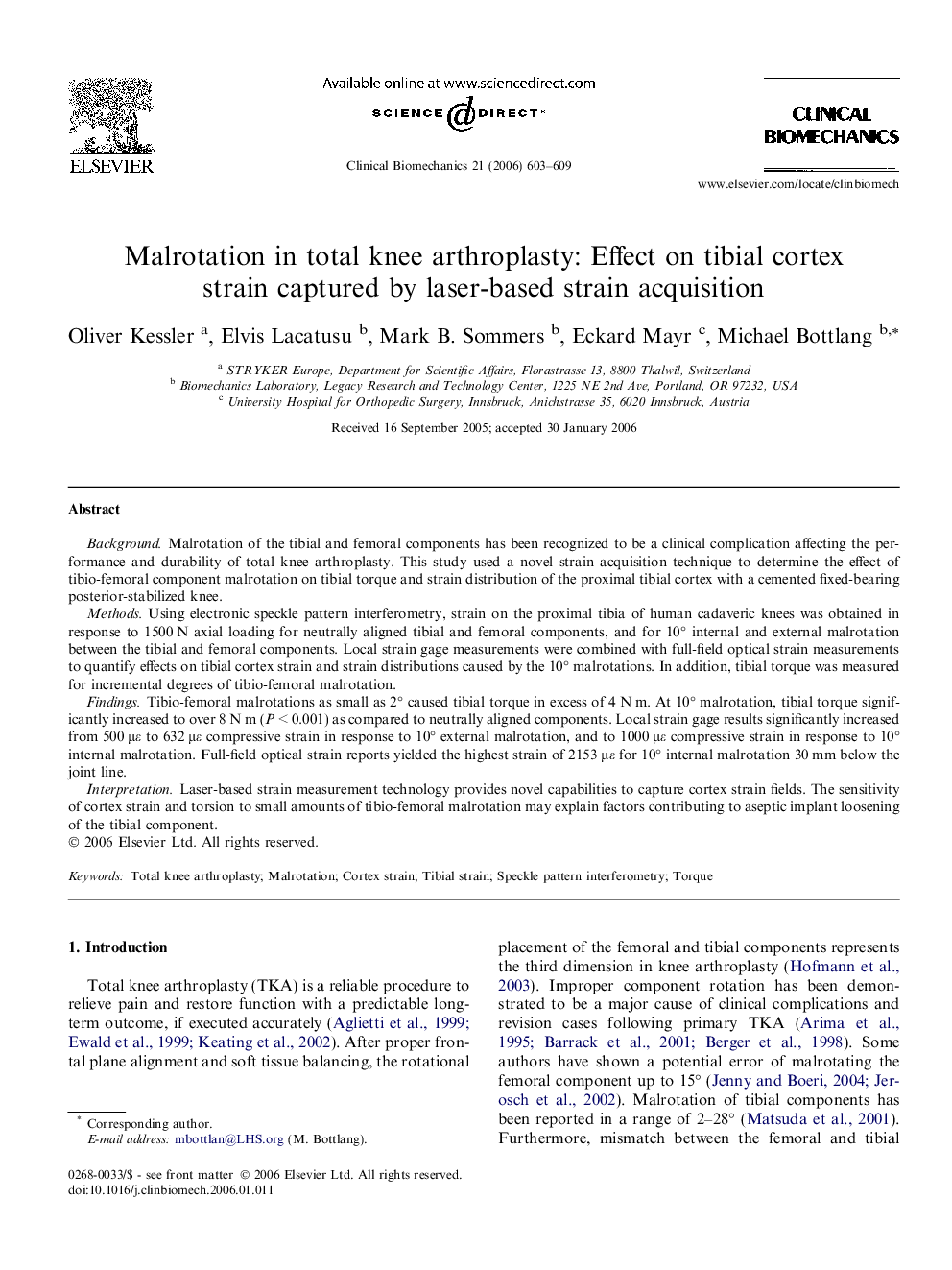| Article ID | Journal | Published Year | Pages | File Type |
|---|---|---|---|---|
| 4051566 | Clinical Biomechanics | 2006 | 7 Pages |
BackgroundMalrotation of the tibial and femoral components has been recognized to be a clinical complication affecting the performance and durability of total knee arthroplasty. This study used a novel strain acquisition technique to determine the effect of tibio-femoral component malrotation on tibial torque and strain distribution of the proximal tibial cortex with a cemented fixed-bearing posterior-stabilized knee.MethodsUsing electronic speckle pattern interferometry, strain on the proximal tibia of human cadaveric knees was obtained in response to 1500 N axial loading for neutrally aligned tibial and femoral components, and for 10° internal and external malrotation between the tibial and femoral components. Local strain gage measurements were combined with full-field optical strain measurements to quantify effects on tibial cortex strain and strain distributions caused by the 10° malrotations. In addition, tibial torque was measured for incremental degrees of tibio-femoral malrotation.FindingsTibio-femoral malrotations as small as 2° caused tibial torque in excess of 4 N m. At 10° malrotation, tibial torque significantly increased to over 8 N m (P < 0.001) as compared to neutrally aligned components. Local strain gage results significantly increased from 500 με to 632 με compressive strain in response to 10° external malrotation, and to 1000 με compressive strain in response to 10° internal malrotation. Full-field optical strain reports yielded the highest strain of 2153 με for 10° internal malrotation 30 mm below the joint line.InterpretationLaser-based strain measurement technology provides novel capabilities to capture cortex strain fields. The sensitivity of cortex strain and torsion to small amounts of tibio-femoral malrotation may explain factors contributing to aseptic implant loosening of the tibial component.
